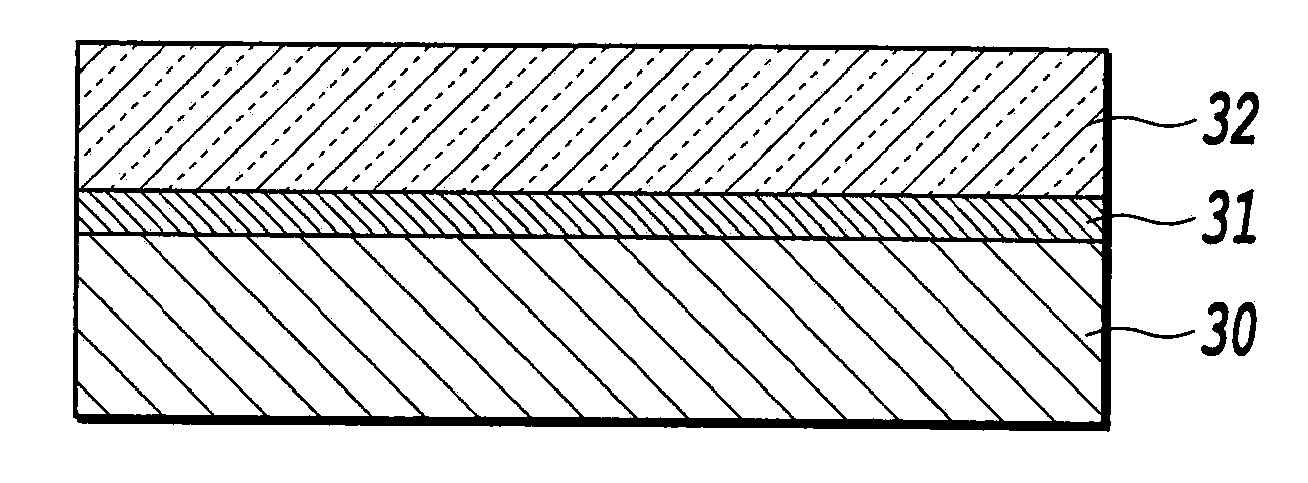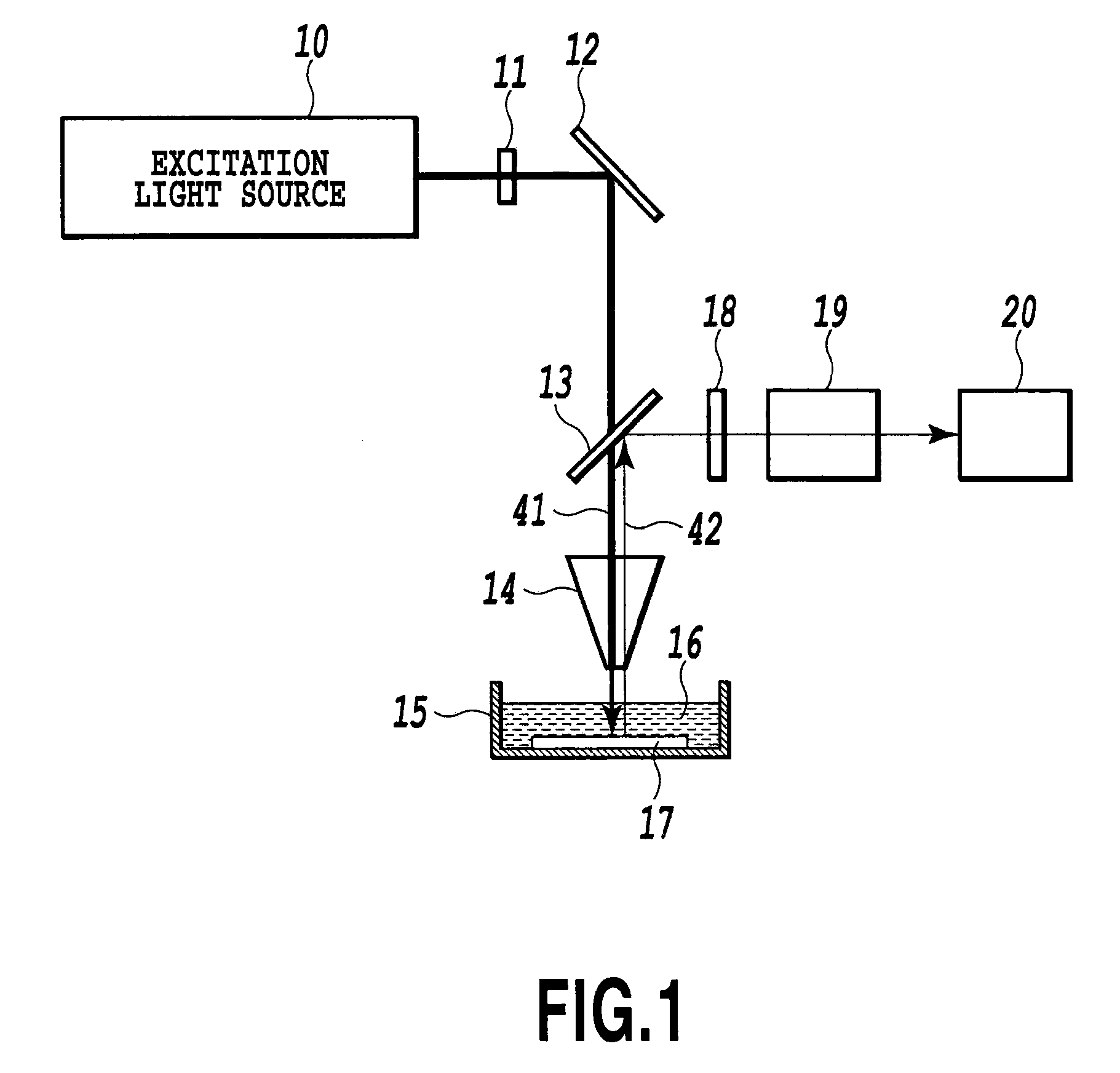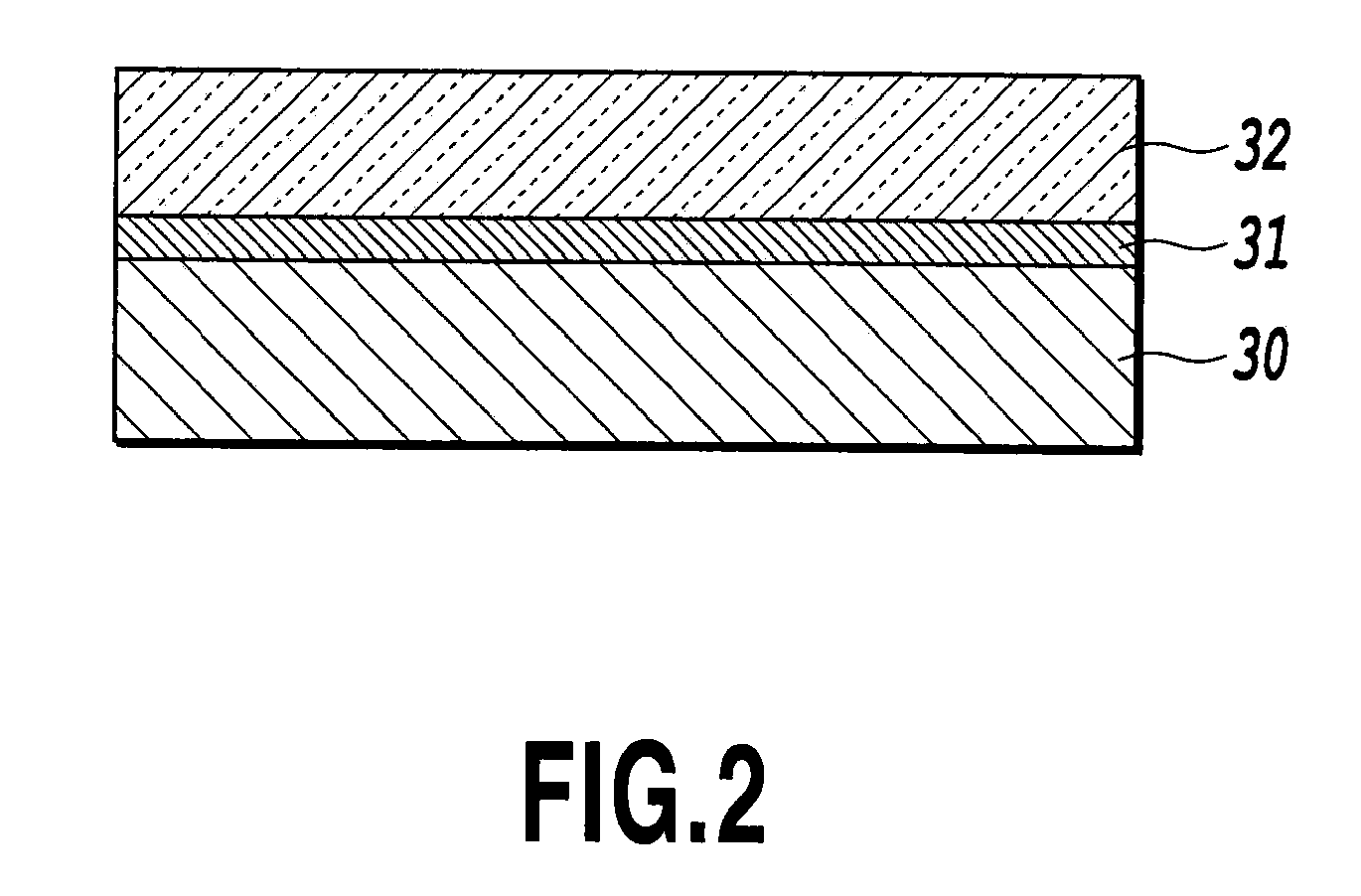Chip for raman scattering enhancement and molecular sensing device including the chip
a molecular sensing and enhancement technology, applied in the field of chips for raman scattering enhancement and molecular sensing devices including chips, can solve the problems of lack of sensitivity for detecting specimens, raman activity, problem of detecting materials, etc., to suppress chemical reactions, detect molecules stably, and increase sensitivity
- Summary
- Abstract
- Description
- Claims
- Application Information
AI Technical Summary
Benefits of technology
Problems solved by technology
Method used
Image
Examples
example 1
[0092]The present example shows a case where the layer containing the noble metal oxide is formed on the substrate, and the dielectric material thin film layer is further formed thereon. For comparison purposes, results are also shown when using a chip (comparative chip A) without the dielectric material thin film layer, and a chip (comparative chip B) with only the substrate.
[0093]As the substrate, a silicon substrate 1 cm square and 525 μm thick was used. As the layer containing the noble metal oxide, a silver oxide was used. The silver oxide was formed by the reactive sputtering method that set Ag as a target and used a gas mixture of oxygen and Ar as a reactive gas. In that case, the flow ratio O2 / (Ar+O2) between the oxygen and Ar was set at 0.75. The composition of the silver oxide formed includes Ag and O at a ratio of one to one, which means that it is AgO. Thus, the silver oxide thin film is referred to as an AgO thin film from now on. In addition, sputtering was carried out...
example 2
[0100]By the same silver oxide thin film formative method as that of the example 1, an AgO thin film with a film thickness of 15 nm was formed on a silicon substrate. Then, five silicon oxide film layers with different film thicknesses of 40 nm, 80 nm, 160 nm, 320 nm and 640 nm were formed thereon to fabricate five chips. The silicon oxide film formative method was the same as that of the example 1. Besides, as a comparative chip, a chip was prepared which had the same AgO thin film but did not have the silicon oxide film layer.
[0101]As the specimen, a solution was used which dissolved BA in a solvent IPA by 1.0×10−5 mol / l, and the Raman scattering measurement was carried out in the same configuration as that of FIG. 7(a) as in the example 1. The present example employed a He—Ne laser (wavelength 633 nm) as the light source for the Raman scattering measurement. In this case also, the formation of the particles containing silver was performed using the light source for the Raman scat...
example 3
[0105]By the same method as that of the example 1, the present example fabricated two types of chips for Raman scattering enhancement having the AgO thin film with a film thickness of 15 nm or 50 nm, and the Raman scattering measurement was performed for a solution that dissolved BA in a solvent IPA by 1.0×10−5 mol / l in the configuration of FIG. 7(a) as in the example 1. In the present example, an Ar ion laser (wavelength 488 nm and intensity 2.7 mW) was used as the light source for the Raman scattering measurement. The film thickness of the dielectric layer (silicon oxide film layer) of the chip for Raman scattering enhancement was made 80 nm. As for the formative method of the silicon oxide film and the formation of the particles containing silver, they were the same as those of the example 1.
[0106]As a result, as for the chip for Raman scattering enhancement having the AgO thin film with the film thickness of 15 nm, the peak intensity at 1002 cm−1 due to BA after five minutes ela...
PUM
 Login to View More
Login to View More Abstract
Description
Claims
Application Information
 Login to View More
Login to View More - R&D
- Intellectual Property
- Life Sciences
- Materials
- Tech Scout
- Unparalleled Data Quality
- Higher Quality Content
- 60% Fewer Hallucinations
Browse by: Latest US Patents, China's latest patents, Technical Efficacy Thesaurus, Application Domain, Technology Topic, Popular Technical Reports.
© 2025 PatSnap. All rights reserved.Legal|Privacy policy|Modern Slavery Act Transparency Statement|Sitemap|About US| Contact US: help@patsnap.com



